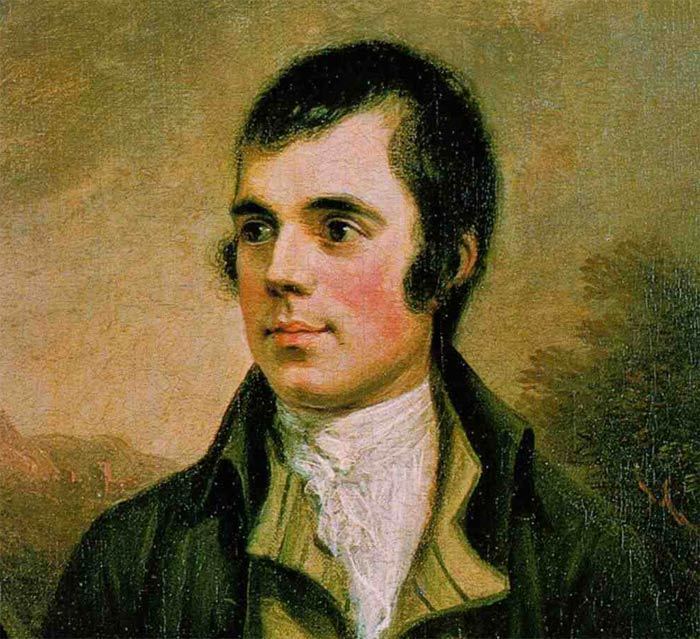 | ||
"Comin' Thro' the Rye" is a poem written in 1782 by Robert Burns (1759–96). It is well known as a traditional children's song, with the words put to the melody of the Scottish Minstrel Common' Frae The Town. This is a variant of the tune to which Auld Lang Syne is usually sung—the melodic shape is almost identical, the difference lying in the tempo and rhythm.
Contents
G. W. Napier, in an 1876 Notes and Queries, wrote that,
The original words of "Comin' thro' the rye" cannot be satisfactorily traced. There are many different versions of the song. The version which is now to be found in the Works of Burns is the one given in Johnson's Museum, which passed through the hands of Burns; but the song itself, in some form or other, was known long before Burns.
The protagonist, "Jenny", is not further identified, but there has been reference to a "Jenny from Dalry" and a longstanding legend in the town of Dalry, North Ayrshire, holds that "comin thro' the rye" describes crossing a ford through the Rye Water at Drakemyre to the north of the town, downstream from Ryefield House and not far from the confluence of the Rye with the River Garnock. When this story appeared in the Glasgow Herald in 1867, it was soon disputed with the assertion that everyone understood the rye to be a field of rye, wet with dew. An alternative suggestion is that "the rye" was a long narrow cobblestone paved lane, prone to puddles of water.
While the original poem is already full of sexual imagery, an alternative version makes this more explicit. It has a different chorus, referring to a phallic "staun o' staunin' graith" (roughly "an erection of astonishing size"), "kiss" is replaced by "fuck", and Jenny's "thing" in stanza four is identified as her "cunt".
Lyrics
The Catcher in the Rye
The title of the novel The Catcher in the Rye (1951) by J. D. Salinger comes from the poem's name. Holden Caulfield, the protagonist, misinterprets a part of this poem to mean "if a body catch a body" rather than "if a body meet a body." He keeps picturing children playing in a field of rye near the edge of a cliff, and him catching them when they start to fall off.
